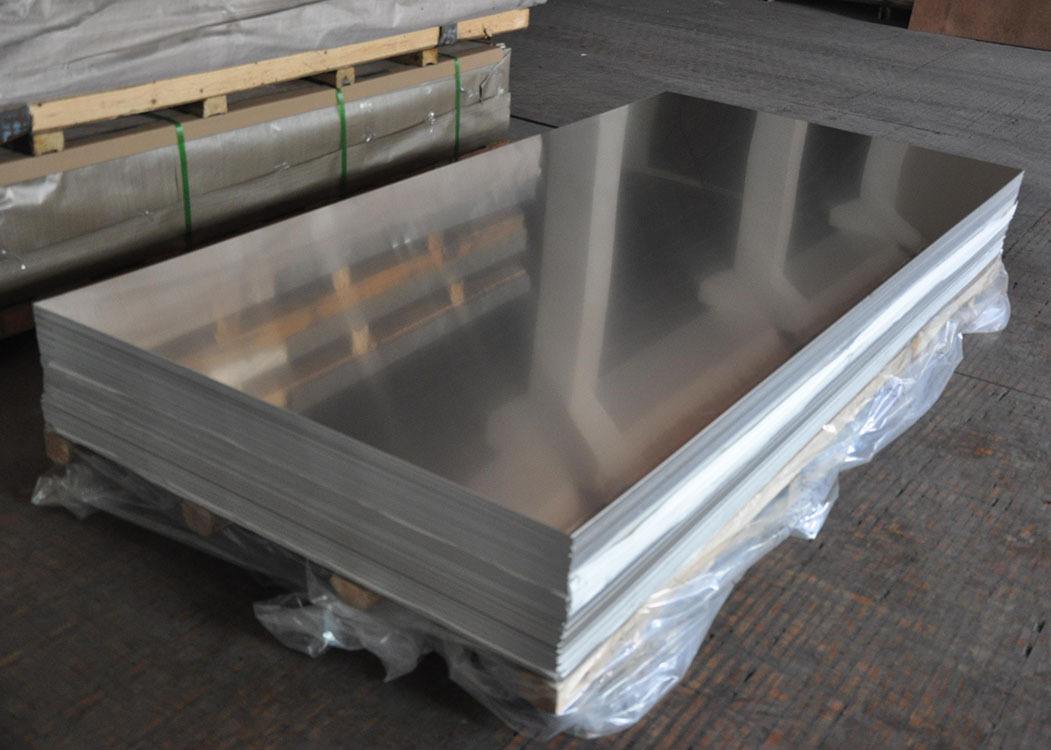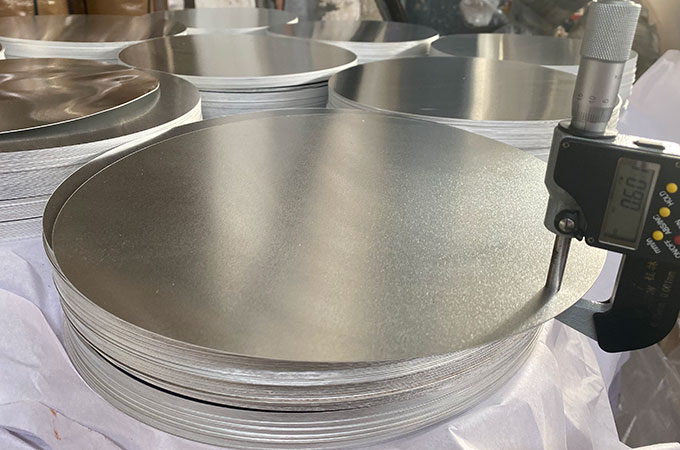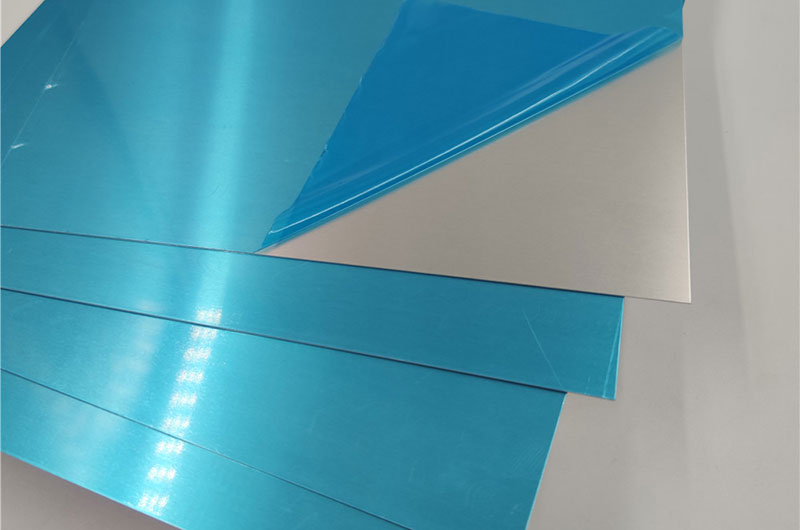1000 series aluminum alloy is considered to be pure aluminum. There are slight differences between 1050 and 1060 aluminum alloys in terms of alloy composition, performance, use and application range. 1050 aluminum alloy contains more than 99.5% aluminum, and 1060 aluminum alloy contains more than 99.6% aluminum. Neither of them can be strengthened by heat treatment, and their strength is relatively low.

1060 is suitable for stretching and other products. It has the characteristics of high plasticity, corrosion resistance, good electrical conductivity and thermal conductivity. 1050 aluminum alloy has gradually been replaced by 1060 aluminum alloy.
1050 vs 1060 Chemical Composition
The aluminum content of 1050 aluminum alloy is more than 99.50% and does not contain copper. The aluminum content of 1060 aluminum alloy is more than 99.60% and contains a small amount of copper (not more than 0.05%).
| Elements | 1050 | 1060 |
|---|---|---|
| Aluminum (Al), % | 99.5 to 100 | 99.6 to 100 |
| Copper (Cu), % | 0 to 0.050 | 0 to 0.050 |
| Iron (Fe), % | 0 to 0.4 | 0 to 0.35 |
| Magnesium (Mg), % | 0 to 0.050 | 0 to 0.030 |
| Manganese (Mn), % | 0 to 0.050 | 0 to 0.030 |
| Silicon (Si), % | 0 to 0.25 | 0 to 0.25 |
| Titanium (Ti), % | 0 to 0.030 | 0 to 0.030 |
| Vanadium (V), % | 0 to 0.050 | 0 to 0.050 |
| Zinc (Zn), % | 0 to 0.050 | 0 to 0.050 |
1050 vs 1060 Properties
1050 aluminum alloy has good toughness, and 1060 aluminum alloy has higher tensile strength and compressive strength, toughness and ductility, but its flame retardancy is poor. The specific performance comparison of 1050 and 1060 aluminum alloys is as follows:
Mechanical Properties
| Properties | 1050 | 1060 |
|---|---|---|
| Elastic (Young's, Tensile) Modulus, GPa | 68 | 68 |
| Elongation at Break, % | 4.6 to 37 | 1.1 to 30 |
| Fatigue Strength, MPa | 31 to 57 | 15 to 50 |
| Poisson's Ratio | 0.33 | 0.33 |
| Shear Modulus, GPa | 26 | 26 |
| Shear Strength, MPa | 52 to 81 | 42 to 75 |
| Tensile Strength: Ultimate (UTS), MPa | 76 to 140 | 67 to 130 |
| Tensile Strength: Yield (Proof), MPa | 25 to 120 | 17 to 110 |
Thermal Properties
| Properties | 1050 | 1060 |
|---|---|---|
| Latent Heat of Fusion, J/g | 400 | 400 |
| Maximum Temperature: Mechanical, °C | 170 | 170 |
| Melting Completion (Liquidus), °C | 640 | 660 |
| Melting Onset (Solidus), °C | 650 | 650 |
| Specific Heat Capacity, J/kg-K | 900 | 900 |
| Thermal Conductivity, W/m-K | 230 | 230 |
| Thermal Expansion, µm/m-K | 24 | 24 |
Electrical Properties
| Properties | 1050 | 1060 |
|---|---|---|
| Electrical Conductivity: Equal Volume, % IACS | 61 | 62 |
| Electrical Conductivity: Equal Weight (Specific), % IACS | 200 | 210 |
Other Properties
| Properties | 1050 | 1060 |
|---|---|---|
| Base Metal Price, % relative | 9.5 | 9.5 |
| Calomel Potential, mV | -750 | -750 |
| Density, g/cm3 | 2.7 | 2.7 |
| Embodied Carbon, kg CO2/kg material | 8.3 | 8.3 |
| Embodied Energy, MJ/kg | 160 | 160 |
| Embodied Water, L/kg | 1200 | 1200 |
1050 vs 1060 Common Calculations
| Properties | 1050 | 1060 |
|---|---|---|
| Resilience: Ultimate (Unit Rupture Work), MJ/m3 | 5.4 to 22 | 0.57 to 37 |
| Resilience: Unit (Modulus of Resilience), kJ/m3 | 4.6 to 110 | 2.1 to 89 |
| Stiffness to Weight: Axial, points | 14 | 14 |
| Stiffness to Weight: Bending, points | 50 | 50 |
| Strength to Weight: Axial, points | 7.8 to 14 | 6.9 to 13 |
| Strength to Weight: Bending, points | 15 to 22 | 14 to 21 |
| Thermal Diffusivity, mm2/s | 94 | 96 |
| Thermal Shock Resistance, points | 3.4 to 6.2 | 3.0 to 5.6 |
1050 vs 1060 Application
1060 aluminum alloy is often used in applications with high corrosion resistance and formability requirements, such as chemical equipment, new energy and other industries.
- Battery soft connection
- Bus interior
- Car parts
- Aluminum plastic panel
- Curtain wall
- Aluminum busbar
- Car radiator (plate)
- Battery cap/explosion valve
- Charging pile (plate)
- Checkered plate
1050 aluminum alloy is usually used to manufacture equipment with low high temperature requirements, such as electronics, food, chemistry, printing and other industries.
- Lithium battery soft connection
- Extreme ear material
- Explosion proof valve
- Heat sink
- Signage
- Curtain wall panels
1050 vs 1060 Price
Because the processing technology of 1050 aluminum alloy is simpler, its price is also cheaper, while the processing technology of 1060 aluminum alloy is more complex, so its price is also higher.
1050 vs 1060 Same point
- Low density
- Can be strengthened
- Easy to process
- Corrosion resistance
- No low temperature brittleness
- Good electrical and thermal conductivity
- Good reflectivity
- Non-magnetic
- Sound absorption
- Resistant to nuclear radiation


